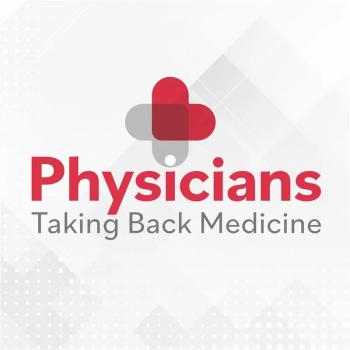
Partnerships can help address, relieve physician burnout
The American College of Physicians unveils peer and patient support to address the growing toll of burnout on physicians.
As part of its ongoing effort to combat physician burnout, the American College of Physicians is developing a team of “professional satisfaction champions,” whose goal is to improve doctors’ sense of professional satisfaction and personal well-being at the chapter and individual level.
Announcement of the champions and their mission came during a media briefing at the ACP’s 2018 annual meeting in New Orleans. “This [burnout] is a complex problem, and an online tool kit is not going to solve it,” said Cynthia Smith, MD, FACP, vice president for clinical programs at the ACP. “It’s also a human problem, requiring a human solution.”
The first cohort, consisting of 80 champions from ACP national and international chapters, recently completed their training, Smith said. Among their first tasks is to “get the word out about the gravity of the problem,” and encourage other physicians to make the case for addressing it at the practice and institutional level.
In addition, champions have been trained in how to measure burnout levels at the individual and group level, identifying doctors at risk, and making evidence-based interventions to head it off and help doctors feel better about themselves and their work, Smith explained.
The champions initiative is part of what Jack Ende, MD, MACP, president of the college, described as a four-pronged strategy for combatting burnout, consisting of promoting individual well-being, improving the practice and organizational environment, fostering local communities of well-being, and advocating for systems change.
Susan Thompson Hingle, MD, MACP, chair of the ACP’s Board of Regents, noted that while physician burnout is not a new problem, it’s taken on greater urgency in recent years. “Our patients are getting older and sicker, fewer students are choosing primary care internal medicine, so we face a worsening shortage issue,” she said. Moreover, many primary care internists now in practice are nearing retirement age. “We can’t afford to sit back while doctors leave the profession early because of burnout,” she said.
Hingle noted that in 2017 the ACP launched a Physician Well-being and Professional Satisfaction Task Force. The task force included a patient representative, with the goal of “helping us identify novel ways that patients and doctors can partner to address burnout,” she said.
Asked what role patients could play in addressing the burnout problem, Hingle cited an example from one of her own patients, whose care required filling out numerous forms for medical equipment. When the paperwork wasn’t completed as fast as the wanted, the patient began filling out the forms herself and bringing them to her appointments.
“All I needed to do was review the documents, change anything that was wrong, and sign them, so it got done much more efficiently,” she said. “And one of the benefits is we now have a wonderful partnership, and when she comes in we can discuss her medical issues rather than paperwork.”
Hingle added that patient advisory councils can be a useful way of giving patients a voice in improving the interactions between patients and medical practices. Moreover, patients can sometimes offer their own expertise in helping the practice become more efficient. “I’ve heard of practices reaching out to patients for input on specific aspects of practice operations based on the expertise of the patient population,” she said.
The ultimate goal of all anti-burnout initiatives, Hingle explained, is to help doctors rediscover the satisfaction of practicing medicine. “The day is so hectic, you never have that space to reflect on the meaning of the work,” she said. “Things like recreating workflows and restoring the primacy of the physician-patient relationship will all help doctors get back to the true meaning of practicing medicine.”
Newsletter
Stay informed and empowered with Medical Economics enewsletter, delivering expert insights, financial strategies, practice management tips and technology trends — tailored for today’s physicians.







